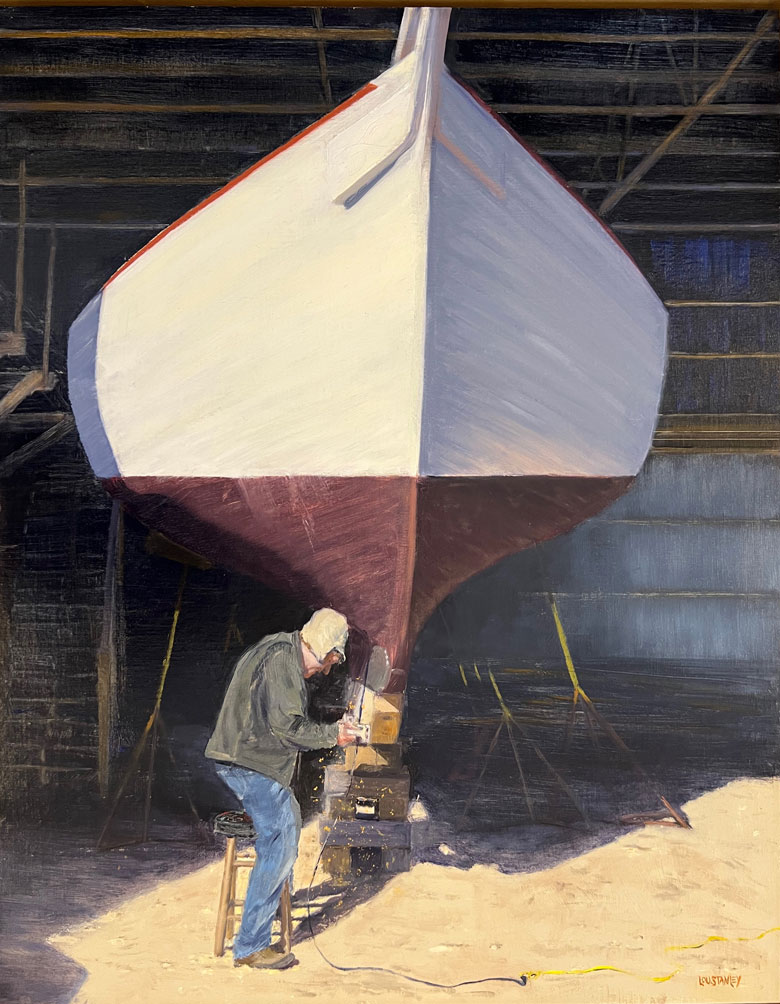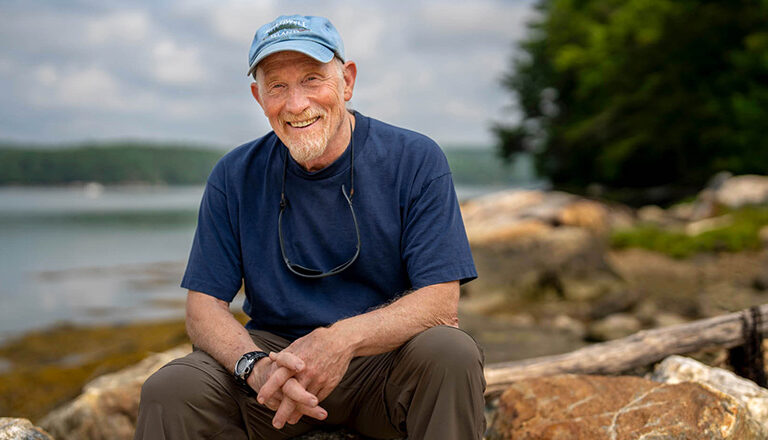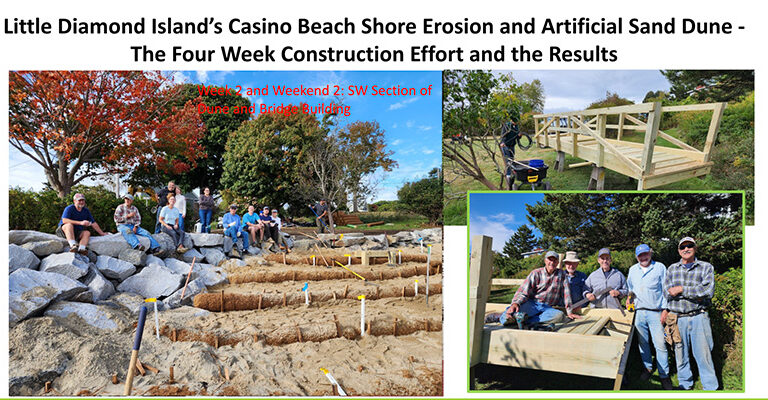Lou Stanley remembers the day she came across Richard Stanley. Richard was in his father Ralph Stanley’s boatyard in Tremont, working on Westwind, a 40-foot Friendship sloop built in 1902 by Charles Morse. It was late fall, the Saturday after Thanksgiving, “the full sun’s warmth,” she writes, “just barely keeping ahead of the chill in the air.”
The project, the artist notes, was a “labor of love, or act of defiance against the nature of reality,” for the boat had arrived in “not floatable” condition as a rebuild job. With his father Ralph’s eye for proportion and “the kind of brain” that can look at a wreck and envision a beautiful vessel, Richard Stanley sought “to give the boat its shape back.”
In the painting, the determined boat restorer handles a vintage Stanley electric plane that sends shavings into the air. He stands astride a stool, his head bent to the work, the sloop looming over him.
“This is the kind of job that Richard spent hundreds, if not thousands of hours doing, over the 50-plus years he’s worked in boat shops,” the painter explains. People should know that “pure joy is available to anyone willing to pursue what is meaningful to them.”
Born Lorraine Strauss on Gotts Island in 1973, Stanley took her first boat ride when she was four-hours old.
For Stanley, that joy comes from painting. With encouragement from several artists, including Joe Paquet, Don Demers, and Mary Erikson, and books like Rick Rubin’s The Creative Act: A Way of Being, Stanley gained the confidence to go out into the world, all year round, to find motifs that spoke to her.
In recent years, her expeditions have taken her to Italy and the Bahamas. Next spring, her painting universe will expand even further, through a residency at Cafe Tissardmine in Erfoud, Morocco, on the edge of the Sahara Desert.
Born Lorraine Strauss on Gotts Island in 1973, Stanley took her first boat ride when she was four-hours old. Not long after, her family drove off in a converted school bus to Houston to see the Maharishi Mahesh Yogi, joining some 10,000 other “hippies and freaks,” as she remembers it. Later, seeking cheap land, they found a farm in Kentucky.
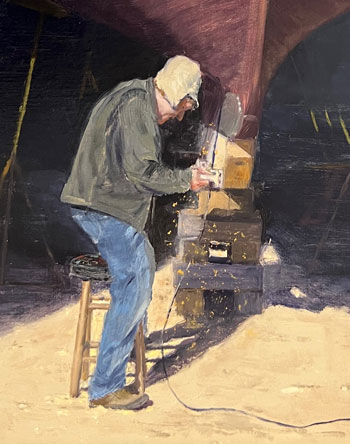
In the late ’70s, Stanley’s parents become Jehovah’s Witnesses and the family moved to San Antonio to help spread the word. They eventually left the faith and lived in Rule, Texas, where her mother had grown up.
“More old pumps and abandoned farms than Dallas, the TV show,” the daughter recalls.
Stanley entered fifth grade when they moved back to Maine. She attended Mount Desert Island High School where she took all the art classes, including ceramics, photography, perspective drawing, and basic color mixing. She loved art, but was encouraged to write, with help from College of the Atlantic poet/professor William Carpenter. A highlight of those years was the weeklong Summer Art Camp at Bowdoin.
In 1990 she enrolled at Hampshire College where she studied with painter Paul Jenkins; she also took a poetry course with Amy Clampitt at Smith. Abandoning verse, she started writing narrative nonfiction with Michael Lesy, author of Wisconsin Death Trip.
After Hampshire, Stanley moved to Durham, North Carolina, for internships at the Independent Weekly newspaper and the Institute for Southern Studies. She quit that work to become a carpenter’s helper, hand-digging footers, lugging materials, and shingling roofs.
Moving to New York City, Stanley worked for another weekly and then at a graphic design company. She tired of city life and returned to Gotts Island in spring 1999 where she met and married Richard Stanley. She started working for his family business, Ralph W. Stanley, Inc., in the fall of 2000, sanding and painting boat bottoms, rigging sailboats in the spring, and doing other boatyard tasks.
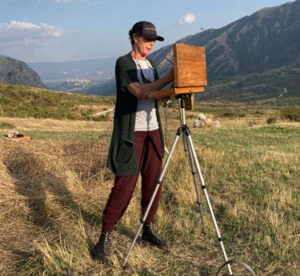
Richard talked her into signing up for an intro to oil painting adult ed class taught by Nicole DeSimone at MDI High School. As soon as she started in with the brushes and paint, Stanley recounts, “I felt like I had come home.”
She has come home: she is currently working on a view of Gotts, island of her birth. “I try to stay in the present,” she says, “pay attention, tell the truth, help others, and see what happens next”—a great attitude for life and art.
Stanley shows at The Gallery at Somes Sound. For more of her work, visit www.loustanleyfineart.com.
Carl Little’s profile of poet Gary Lawless appears in the 2025 Island Journal.
